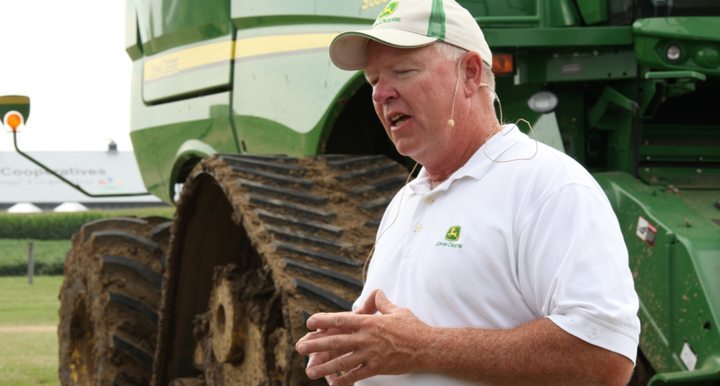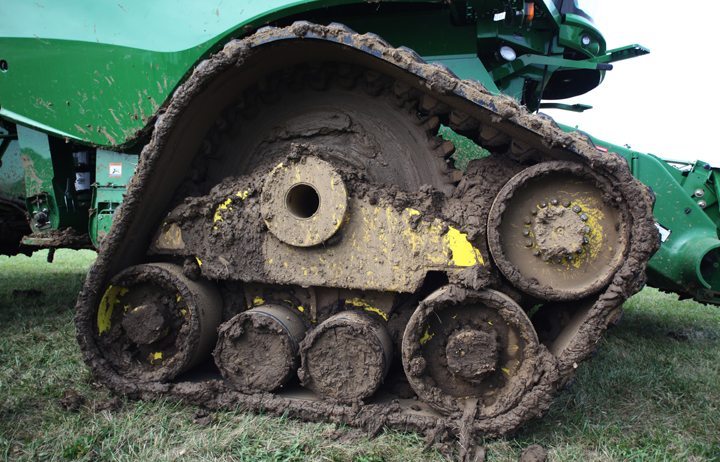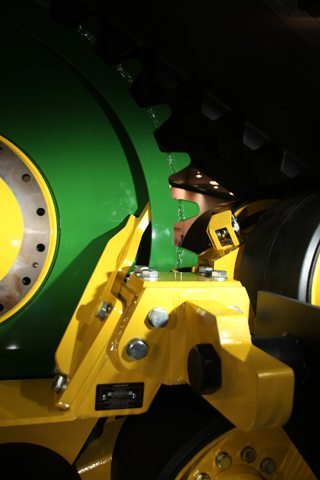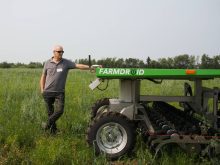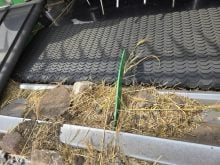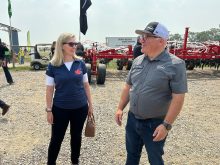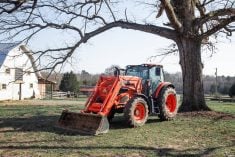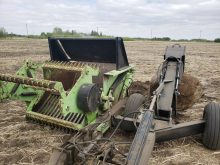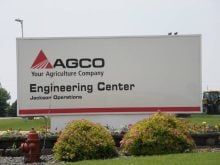COLUMBUS, Ohio — Producers can soon start putting Deere tracks in their fields.
John Deere released its 2014 lineup of machinery changes last week in Ohio, and with it came tracks.
Built by ATI of Mount Vernon, Indiana, the track systems found on machines in Canada and the United States will be different from their European counterparts.
However, Deere product developers and managers say the ATI units are known for their heavy duty design.
Katie Dierker of Deere said the 36 inch wide tracks will provide better combine flotation and fuel consumption than tires when conditions are damp at harvest.
Kim Cramer of the company’s Harvester Works said the tracks allow producers to get into the field earlier in the season if soil is wet, providing an opportunity to obtain higher grades on small grains and prevent losses because of sprouting.
Read Also

Russian wheat exports start to pick up the pace
Russia has had a slow start for its 2025-26 wheat export program, but the pace is starting to pick up and that is a bearish factor for prices.
The tracks are a dealer installed option for the 2014 S series combines that have the heavy duty transmissions.
Cramer said it takes about four hours to change from tires to tracks.
The ATI tracks have an aggressive approach angle because of an idler mounted high in the front of the track system.
A lack of a mid-roller on the bottom of the track improves the ride of the combine because it reduces the vertical impact of an idler being pushed directly up into the axle.
Deere staff demonstrating the new equipment for North American dealers near Columbus said one advantage of the tracks in all conditions is the stability they bring to combines with wide headers because tire bounce is eliminated.
The wide tracks allow for less scrubbing during tight turns than do longer, narrower designs.
Slightly lower transport speeds are part of the change from tires to tracks, but top speed remains about 18 m.p.h.
Sealed bearings mean the tracks have no regular maintenance. A heavy duty steel scraper keeps the drive wheel clean.
A hydraulic cylinder and pair of accumulators maintain track tension, which is monitored by a sight gauge.
“We haven’t got final pricing yet, but it’s a bit over $50,000, a comparable price to aftermarket tracks,” Cramer said.
“We see some producers who will order a combine with both tracks and tires. The dealer will put on the tracks for them and they will have both. They will likely trade the combine with the tires in place and keep the tracks for their new one.”
The German designed tracks found on machines in Europe since 2010 have a central third roller and longer footprint with a more complex tensioning system.
